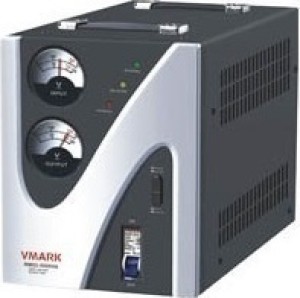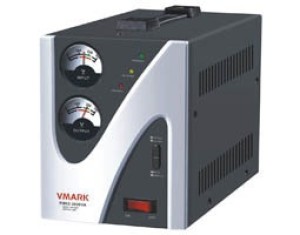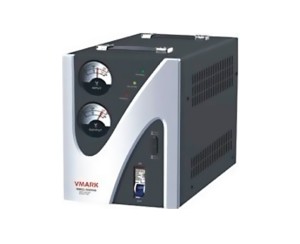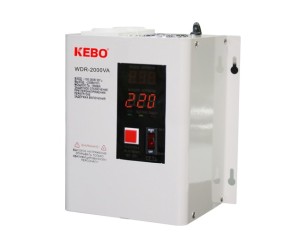-
 ΕΙΚΟΝΑ - ΗΧΟΣ
ΕπιστροφήΕΠΑΓΓΕΛΜΑΤΙΚΟΣ ΗΧΟΣ
ΕΙΚΟΝΑ - ΗΧΟΣ
ΕπιστροφήΕΠΑΓΓΕΛΜΑΤΙΚΟΣ ΗΧΟΣ- Επαγγελματικά Ηχεία
- Τελικοί Ενισχυτές
- Μικροφωνικοί Ενισχυτές - Συστήματα 100 Volt
- Κονσόλες
- Audio Recording - Κάρτες Ήχου
- Ηχεία Οροφής - Χωνευτά
- Ηχοστήλες - Κόρνες Ανακοινώσεων
- MIDI - DJ Controllers
- Πλήκτρα & Synths
- DJ-MIXERS
- Video Matrix
- CD - USB Player
- Επεξεργαστές ήχου - Περιφερειακά
- Ενισχυτές Κιθάρας
- FM Tuners
- Μουσικά Πρoϊόντα
- Τηλεβόες
- Audio Software
- Κονσόλες AUDIO/VIDEO
- Συνεδριακά
- Φορητοί Εγγραφείς
- Ηχοαπορροφητικά Υλικά
- Subwoofer
- Δείτε περισσότερα
-
 ΠΕΡΙΦΕΡΕΙΑΚΑ/ ΥΠΟΛΟΓΙΣΤΕΣ
Επιστροφή
ΠΕΡΙΦΕΡΕΙΑΚΑ/ ΥΠΟΛΟΓΙΣΤΕΣ
Επιστροφή -
 ΣΥΣΤΗΜΑΤΑ ΑΣΦΑΛΕΙΑΣ
ΕπιστροφήΣΥΝΑΓΕΡΜΟΙ
ΣΥΣΤΗΜΑΤΑ ΑΣΦΑΛΕΙΑΣ
ΕπιστροφήΣΥΝΑΓΕΡΜΟΙ- Ασύρματοι Συναγερμοί
- Κεντρικοί Πίνακες
- Ανιχνευτές Κίνησης (Ενσύρματοι)
- Πληκτρολόγια Κέντρου
- Εσωτερικές Σειρήνες
- Μαγνητικές Επαφές (Ενσύρματες)
- Εξαρτήματα Συναγερμών
- Φάροι - Strobe
- Αισθητήρες & Ανιχνευτές
- GSM / GPRS / IP Communication
- Ενσύρματες Επεκτάσεις
- Τροφοδοτικά Συναγερμών
- Κουτιά Συναγερμών
- Μετασχηματιστές
- Αυτόνομες Εξωτερικές Σειρήνες
- Βάσεις - Αξεσουάρ Ανιχνευτών
- Μαγνητικές Επαφές (Ασύρματες)
- Ανιχνευτές Κίνησης (Ασύρματοι)
- Ολοκληρωμένα Πακέτα Συναγερμών
- Μπαταρίες Συναγερμού
- Ασύρματες Επεκτάσεις
- Τηλεχειρισμός
- Εργαλεία Εγκαταστάτη
- Ενεργητικά Υπέρυθρα Beam
ΠΥΡΑΝΙΧΝΕΥΣΗ- Συμβατικές Σειρήνες
- Συμβατικά Κομβία
- Συμβατικές Δέσμες
- Addressable Πίνακες Πυρανίχνευσης
- Addressable Ανιχνευτές
- Addressable Κομβία
- Addressable Σειρήνες
- Addressable Modules
- Addressable Software
- Συμβατικοί Πίνακες Πυρανίχνευσης
- Συμβατικοί Ανιχνευτές
- Τροφοδοτικά Πυρανίχνευσης
- Αυτόνομοι ανιχνευτές
- Βάσεις Πυρανίχνευσης
- Πλακέτες Επέκτασης
-
 ΗΛΕΚΤΡΟΝΙΚΑ / ΒΑΣΕΙΣ
Επιστροφή
ΗΛΕΚΤΡΟΝΙΚΑ / ΒΑΣΕΙΣ
Επιστροφή -
 ΗΛΕΚΤΡΟΛΟΓΙΚΑ / ΕΡΓΑΛΕΙΑ
Επιστροφή
ΗΛΕΚΤΡΟΛΟΓΙΚΑ / ΕΡΓΑΛΕΙΑ
Επιστροφή -
 ΚΑΛΩΔΙΑ ΑΝΑΛΏΣΙΜΑ
ΕπιστροφήΚΑΛΩΔΙΑ
ΚΑΛΩΔΙΑ ΑΝΑΛΏΣΙΜΑ
ΕπιστροφήΚΑΛΩΔΙΑ- VGA-Καλώδια
- Ηλεκτρολογικά
- Τακτοποίηση καλωδίων
- Τροφοδοσίας
- XLR Καλώδια
- USB-Καλώδια
- HDMI-Καλώδια
- Παράλληλα - Σειριακά
- Καλώδια TV - SAT
- Δικτύου - UTP
- Καλώδια Συναγερμού
- Τροφοδοσίας Ισχύος
- Firewire - IEEE
- Ήχείων
- Τηλεφωνικά Καλώδια
- MIDI
- Καλώδια CCTV
- RCA Καλώδια
- DVI Καλώδια
- JACK καλώδια
- Οπτική ινα
- DisplayPort
- Scart
- Ήχου
- Speakon
- Εσωτερικά Η/Υ
- SMA
-
 Επαγγελματίες Τουρισμού -5%
Επαγγελματίες Τουρισμού -5%
 Μεταφορικές εταιρίες - Taxi -5%
Μεταφορικές εταιρίες - Taxi -5%
 Εμπορικές εταιρείες/Καταστήματα -5%
Εμπορικές εταιρείες/Καταστήματα -5%
 Βιομηχανίες / Εργαστήρια -5%
Βιομηχανίες / Εργαστήρια -5%
Το καλάθι μου
Προϊόντα: {{countCartProducts}}
{{(cartTotal * selectedCurrency.rate).toFixed(2)}}€ - {{(cartDefaultCouponDiscount * selectedCurrency.rate).toFixed(2)}}€
{{((cartTotal - cartDefaultCouponDiscount) * selectedCurrency.rate).toFixed(2)}}€
Σύνολο : {{(cartTotal * selectedCurrency.rate).toFixed(2)}}€
Συνολικό Βάρος : {{cartProductWeightTotal}}g
Το καλάθι σας είναι άδειο
AUDIOQUEST Niagara 3000
Κωδικός προϊόντος: 16220
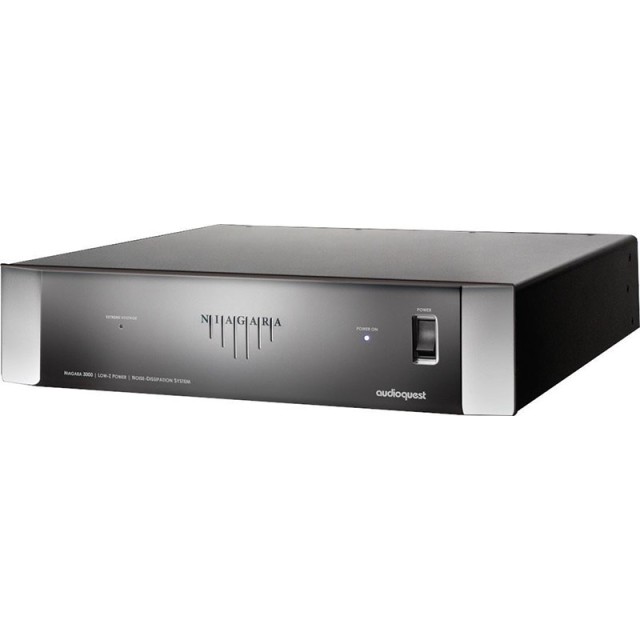
To AudioQuest Niagara 3000 ειναι ενα πολυμπριζο/φιλτρο/προστατευτικο/AC διαχειριστης και αποθηκη ρευματος για αποδοση οταν απαιτειται (current boost ability).
Τιμή Wisdom:
3995.00€

Με την αγορά αυτού του προϊόντος κερδίζετε
3995 Πόντους
Προϊόν της εταιρείας:
AUDIOQUEST
ΤΕΧΝΙΚΑ ΧΑΡΑΚΤΗΡΙΣΤΙΚΑ
- Transient Power Correction: Provides over 55 amps peak instantaneous current reservoir with reduced line impedance for current-starved power amplifiers, whether they incorporate linear or switching power supplies.
- Ground Noise-Dissipation System: AudioQuest’s patented technology vastly reduces ground-borne noise without compromising safety or creating low-level ground loops.
- Level-X Linear Noise-Dissipation Technology: Ensures the most consistent and widest bandwidth noise dissipation possible, without the inconsistent results that typify minimalist, multi-node resonant peaking found in many AC power conditioners.
- NRG Series AC Power Inlets and Outlets: These inlets and outlets feature both high purity red copper and beryllium copper for superior conductivity, grip, and strength. These are then direct-plated with a thick layer of silver via a “hanging-silver” process, to ensure the lowest impedance at radio frequencies, enabling superior noise dissipation.
Specifications
- Surge Suppression: Non-sacrificial (nothing to damage with repeated 6000V/3000A input surge tests, which is the maximum that can survive through a building’s AC electrical panel).
- Extreme Voltage Shutdown Voltage:140VAC (will activate the main high-current relay to open within less than 0.25 second; automatically resets once the incoming power is within a safe range).
- Transverse-Mode Noise Dissipation:In excess of 24dB from 3kHz to 1GHz, linearized for dynamic (rising) line impedance with frequency (source) and 10 to 50 ohm load, system current dependent.
- Input Current Maximum Capacity:15 amps RMS (total).
- Level-X Linear Noise-Dissipation System AC Power Outlet Banks:2 Isolated groups - Total (outlets 3 through 5 and outlets 6 and 7. )
- Number of AC Outlets:7 (2 High Current/Transient Power Correction; 5 Level-X Linear Noise Dissipation System Power).
- Power Consumption:Typically, less than 0.25 amps at 120VAC input, or with the power correction switched to “off ”/“0” setting. (This is dependent on a reactive vector load. For more info, see “Operation and Continuous Use: Rear-Panel Power Correction Switch – Niagara 3000 current draw.”)
- Dimensions: 44.4 W x 8.70 H x 38.60 cm D (2-RU rack-mounting ears are provided)
- Weight: 11.29 kg.
The science of AC power delivery is not a simple one; it demands focus, and the devil is in the details. In fact, the great increase in airborne and AC-line-transmitted radio signals, combined with overtaxed utility lines and the ever-increasing demands from high-definition audio/video components, has rendered our utilities’ AC power a somewhat antiquated technology.
Where Alternating Current (AC) is concerned, we’re relying on a century-old technology created for incandescent lights and electric motors—technology that was certainly never meant to power the sophisticated analog and digital circuits used in today’s premium audio/video systems. To properly accommodate the promise of today’s ever-increasing bandwidth and dynamic range, we must achieve extraordinarily low noise across a very wide range of frequencies.
Further, today’s power amplifiers are being taxed for instantaneous peak-current demand, even when they’re driven at modest volumes. Although we have seen a substantial increase in dynamics from much of our audio software, the loudspeakers we employ to reproduce them are often no more efficient than they were two to four decades ago. This places great demands on an amplifier’s power supply, as well as the source AC power supplying it.
Our systems’ sensitive components need better alternating current—a fact that has resulted in a host of AC power conditioning, isolation transformer, regeneration amplifier, and battery back-up system topologies. Through differential sample tests and spectrum analysis, it can be proven that up to a third of a high-resolution (low-level) audio signal can be lost, masked, or highly distorted by the vast levels of noise riding along the AC power lines that feed our components. This noise couples into the signal circuitry as current noise and through AC ground, permanently distorting and/or masking the source signal.
Given that the stakes are so high, all sincere attempts to solve this problem must be applauded.
Once the audio/video signal is gone, it’s gone forever…
For AudioQuest, honoring the source is never a matter of simply using premium “audiophile-grade parts” or relying on a proprietary technology—common approaches within our community. For years, we have all been witness to the same, seemingly endless audiophile debates: valves versus transistors; analog versus digital; can cables really make a difference?; and on and on. While we, too, can brag about our many unique technologies, we realize that true audio/video optimization is never a matter of any one secret or exotic circuit. When it comes to noise filtering for AC power, many approaches can yield meaningful results. However, these approaches may also impart ringing, current compression, and non-linear distortions that can render the cure worse than the disease!
The Niagara 3000 features our patented AC Ground-Noise Dissipation, the widest bandwidth-linearized AC filter in the industry, and our unique passive/active Transient Power Correction Circuit. Boasting an instantaneous current reservoir of over 55 amps peak, the Niagara 3000 is specifically designed for today’s current-starved power amplifiers. Many AC power products featuring “high-current outlets” merely minimize current compression; the Niagara 3000 corrects it.
Though it’s easy to tout a given technology, it’s quite another thing to create a solution that is consistent, holistic, functional, and that honors verifiable science. It’s not enough to reduce AC line noise and its associated distortions at just one octave, thus leaving vulnerable the adjacent octaves and octave partials to noise, resonant peaking, or insufficient noise reduction. Consistency is key. We should never accept superior resolution in one octave, only to suffer from masking effects a half-octave away and ringing artifacts two octaves from there. This is the principal criterion for AudioQuest’s Low-Z Power Noise-Dissipation System.
The Niagara 3000 represents over 20 years of exhaustive research and proven AC power products designed for audiophiles, broadcast engineers, and professional-audio applications. Every conceivable detail has been addressed: In the Niagara 3000, you’ll find optimized radio-frequency lead directionality, capacitor run-in forming technologies developed by Jet Propulsion Laboratories and NASA, and AC inlet and outlet contacts with heavy silver plating over extreme-purity copper, assuring the tightest grip possible.
A great system is built from a solid foundation, and that foundation starts with power. With an AudioQuest Niagara 3000, you’ll experience for the first time the clarity, dimensionality, frequency extension, dynamic contrast, and grip your system has always been capable of delivering—if only the power had been right!
We welcome you to experience the Niagara 3000 and hear firsthand the remarkable results of highly optimized power management: startlingly deep silences, stunning dynamic freedom, outstanding retrieval of ambience cues, and gorgeous delineation of instruments and musicians in space. Once you’ve experienced it, it may seem so elegant, so logical, and so obvious that you find yourself wondering why it hadn’t been done before.

